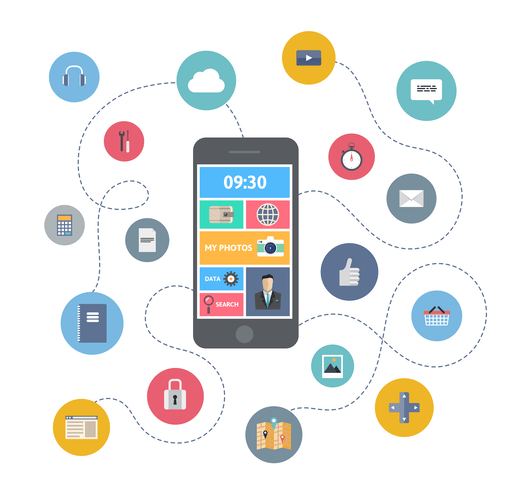What is IoT: The Internet of Things explained

Contact our team of experts to learn how you can leverage Telnys IoT SIM cards for global connectivity. IoT is a growing market, and nearly every industry can benefit from its many varied use cases.
Oura, another smart ring, features infrared sensors for heart rate and respiration, NTC temperature sensors, and motion sensors. Likewise, Circular, a wellness and fitness smart ring, tracks sleep and also monitors daily activity. The core IoT industries such as manufacturing, retail, transportation, government, and healthcare continue to introduce new IoT applications and solutions to their daily operations. Among the current IoT business adopters, 88% believe IoT is critical to their business success. The Internet of Things (IoT) is a new computation paradigm that allows everyday objects to connect to the Internet, exchange data with servers and other connected things, and make the world ‘smarter’ for their users.
Top Internet-of-Things (IoT) Examples to Know
Many grocers have developed innovative technologies that allow customers to place orders online, that notify the customer when the order is ready, and that then detect when the customer is nearby, creating a seamless customer experience. Network-wide inventory visibility is essential for enabling unified commerce. With network-wide inventory visibility, companies can avoid stockouts and overstock situations, reducing carrying costs and enhancing customer satisfaction. By utilizing advanced tracking technologies such as RFID, IoT sensors, and data analytics, businesses can gain insights into inventory levels, location, and movement in real-time, allowing them to make better data-driven decisions. One of the earliest IoT examples of convenience smart home devices on the market is SmartThings, now owned by Samsung. SmartThings aims to form ecosystems of compatible IoT devices that can be easily configured and controlled remotely through the Cloud.
In agriculture, IoT devices offer precision farming, livestock monitoring, and smart irrigation systems, leading to increased agricultural efficiency, reduced waste, and improved sustainability. In transportation, IoT devices optimize fleet management, traffic flow, and logistics operations, improving efficiency, safety, and customer experiences. Connected sensors in shipping containers can provide real-time data on location, temperature, humidity, and even security breaches.
Samsung Electronics’ Smart Appliances
These devices can be easily connected and controlled through a central hub, providing homeowners with real-time notifications and remote access to surveillance footage. With the ability to monitor and control security systems from anywhere, smart home devices offer enhanced peace of mind and improved home security. Industrial IoT (IIoT) utilizes IoT software and hardware tools to connect and synchronize a large number of devices, machines, and people in an industrial setting. IIoT enables smart industrial operations and transformational business outcomes through the deployment of advanced data analytics. The most promising features of IIoT are the reduction of human error and manual labor, the increase in overall efficiency, and of course the lowering of costs.

The future of IoT will be dependent on the evolution of various other technologies, but IoT itself will also be responsible for determining the direction of travel. Duke Energy has developed a self-healing grid system that automatically reconfigures itself when there is a power cut in a house or area. The National Grid is using Open Energi’s Direct Demand technology to balance supply and demand across the UK power grid. Nissan has partnered with ENEL to develop a Vehicle-to-Grid (V2G) system allowing drivers and energy users to operate as individual energy hubs with the ability to use, store, and return excess energy to the grid.
Tesla’s Connectivity Service
Swiss company named ‘Sensimed’ introduces smart contact lenses that can detect minor fluctuations in the volume of the eye. The device is capable to transmit data without using any wire to the antenna that is located around the eye. Even IoT is in infancy but it is leading the world by giving a lot of smart devices to the industry.

Engage3’s Price Image tool helps retailers set prices and evaluate competitive costs by using machine learning to combine in-store audits, web scraping and point of sales data. Its platform provides predictive analytics, historical pricing data and a product database containing millions of UPCs and billions of annual price updates. Tovala pairs its smart oven with a meal-kit delivery subscription service with the goal of providing users an effortless, mess-free way to cook food. Tovala’s smart oven works by scanning QR or bar codes and connecting to Wi-Fi, which it then uses to determine the best temperature and time to cook the food to avoid undercooking or burning. Electrolux is a home appliance company offering fridges, ovens, washers, dryers and more.
Using IoT Applications to Manage the Spread of Covid-19
This data forms the backbone of the various intelligent solutions that eliminate traffic congestion, unlock sustainable development, and improve citizen safety. The term IoT, or Internet of Things, refers to the collective network of connected devices and the technology that facilitates communication between devices and the cloud, as well as between the devices themselves. Thanks to the advent of inexpensive computer chips and high bandwidth telecommunication, we now have billions of devices connected to the internet.
The car marker is testing connected traffic lights that would time red and green lights for emergency vehicles and explore the benefits of combining automated and connected vehicles on the same networked infrastructure, Ford said. Honeywell Connect Me occupant app teams up with its smart thermostat TC500A to allow remote monitoring of commercial buildings from a mobile device. The thermostat system connects to the cloud and can also be managed locally from an app for a small commercial setup or one with multiple sites, Honeywell stated on its site. IoT devices are nonstandard computing devices that connect wirelessly to the Internet or a local network hub, TechTarget reports.
Propeller Health’s Inhaler Sensor
Some examples of standardized device management protocols include the Open Mobile Alliance device management and Lightweight Machine to Machine. Smart sensors located in a conference room can help an employee locate and schedule an available room for iot platform vendors a meeting, ensuring the proper room type, size and features are available. IoT and IoT devices aid in making daily activities faster, easier or more convenient for consumers while also providing real-time data for industrial or enterprise use cases.
- The Wink app allows users to control multiple products from various providers.
- IoT devices can be used in agriculture to monitor soil conditions, weather patterns and crop growth.
- With high volatility, demand forecasts in June can be completely different than actual demand in December.
- As wearable devices continue to advance, they are becoming more sophisticated, accurate, and aesthetically appealing.
- With IoT devices, retailers can achieve better visibility into their inventory, reduce losses, and provide a seamless shopping experience to customers.
Factory settings could generate $1.4 trillion to $3.3 trillion by 2030, or just over a quarter of the total value potential. IoT economic impact in human health settings could reach around 14 percent of the total estimated value. The GS1 digital link standard,[198] first released in August 2018, allows the use QR Codes, GS1 Datamatrix, RFID and NFC to enable various types of business-to-business, as well as business-to-consumers interactions. Tesla also gives drivers the option to connect to their vehicle through the Tesla app, which can access the vehicle’s charging history and climate controls and be used to schedule service and roadside assistance.
A solution to “basket of remotes”
In summary, transportation IoT devices are revolutionizing the industry by optimizing fleet management, improving traffic flow, enhancing logistics operations, and enabling smarter and safer transportation. With real-time data and connectivity, these devices are shaping the future of transportation, making it more efficient, sustainable, and convenient for both businesses and individuals. With IoT technology, vehicles can communicate with each other, infrastructure, and central systems, enabling smarter and safer transportation. Connected vehicles can receive real-time updates on road conditions, weather, and traffic, allowing for predictive maintenance, advanced driver assistance systems, and improved safety features.


